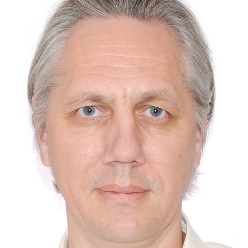Dynamical and Chemical Processes of Atmosphere-Ionosphere Coupling
A special issue of Atmosphere (ISSN 2073-4433). This special issue belongs to the section "Upper Atmosphere".
Deadline for manuscript submissions: closed (26 July 2021) | Viewed by 17782
Special Issue Editors
Interests: solar-terrestrial physics; geomagnetic storms; Earth’s atmosphere; atmosphere dynamic; atmospheric electricity; cosmic rays; aeronomy; airglow; optics; optical spectroscopy; Pabry–Perot interferometer; all-sky imager; optical spectrometer; radiophysics; ionosphere sounding; incoherent scattering; ionosphere heating facility; data analysis; experimental and observation technique
Interests: thermosphere-ionosphere system; numerical model; ionospheric electric field and currents; geomagnetic storm; atmosphere-ionosphere coupling; radiowave propagation
Special Issue Information
The upper atmosphere has become a habitat for humanity due to the expansion of numerous activities there. The precise geolocation, telecommunications and Earth surface observations are highly popular and important technologies which directly depend on the state of the upper atmosphere. Geomagnetic storms due to solar flares and solar plasma eruptions are very strong events that could affect the quality of the satellite link and the functioning of the satellites onboard systems both directly and through disturbed environment of the near Earth space. Also, the knowledge of the near-Earth space environment state is becoming more important as the requirement for the bandwidth and spatial resolution of satellite systems grows. So, not only the geomagnetic storms, but also the powerful processes in the lower atmosphere, like sudden stratospheric warmings, planetary waves, cyclones and thunderstorm clusters, etc., should be explored carefully for effects they produce in the middle and upper atmosphere. Another important issue (arising with the increased numbers of satellite) is the ecology of the near-Earth space. The problem of space debris is very well known. However, the problem of the changing corrosion properties of the middle and upper atmosphere air due to exhaust of spacecraft engines including high energy ions, chemically active rests of fuel and components of electrical power batteries, is still open questions. The objective of the proposed Special Issue is to provide a forum for articles related to recent advances in both the effects of geomagnetic storms and the lower atmosphere dynamic on the middle and upper atmosphere. Moreover, we await examples of upper atmosphere response to the fast expansion of human activity in the near-Earth space, and proposals for the evaluation of its consequence. Contributions related to all aspects of the proposed areas, based on observational (ground-based and space-borne), theoretical and simulation studies of mesosphere, thermosphere, and ionosphere are welcome.
Dr. Roman V. Vasilyev
Dr. Maxim V. Klimenko
Guest Editors
Manuscript Submission Information
Manuscripts should be submitted online at www.mdpi.com by registering and logging in to this website. Once you are registered, click here to go to the submission form. Manuscripts can be submitted until the deadline. All submissions that pass pre-check are peer-reviewed. Accepted papers will be published continuously in the journal (as soon as accepted) and will be listed together on the special issue website. Research articles, review articles as well as short communications are invited. For planned papers, a title and short abstract (about 100 words) can be sent to the Editorial Office for announcement on this website.
Submitted manuscripts should not have been published previously, nor be under consideration for publication elsewhere (except conference proceedings papers). All manuscripts are thoroughly refereed through a single-blind peer-review process. A guide for authors and other relevant information for submission of manuscripts is available on the Instructions for Authors page. Atmosphere is an international peer-reviewed open access monthly journal published by MDPI.
Please visit the Instructions for Authors page before submitting a manuscript. The Article Processing Charge (APC) for publication in this open access journal is 2400 CHF (Swiss Francs). Submitted papers should be well formatted and use good English. Authors may use MDPI's English editing service prior to publication or during author revisions.
Keywords
- Earth’s atmosphere
- atmosphere dynamic
- solar-terrestrial physics
- geomagnetic storm
- thermosphere
- ionosphere
- mesosphere
- aeronomy
- airglow
- ionospheric irregularities
- traveling ionospheric disturbances
- atmosphere gravity waves
- sudden stratospheric warming
- planetary waves
- cyclone
- thunderstorm
- whole atmosphere models
- active space experiments
- satellite engine exhaust






